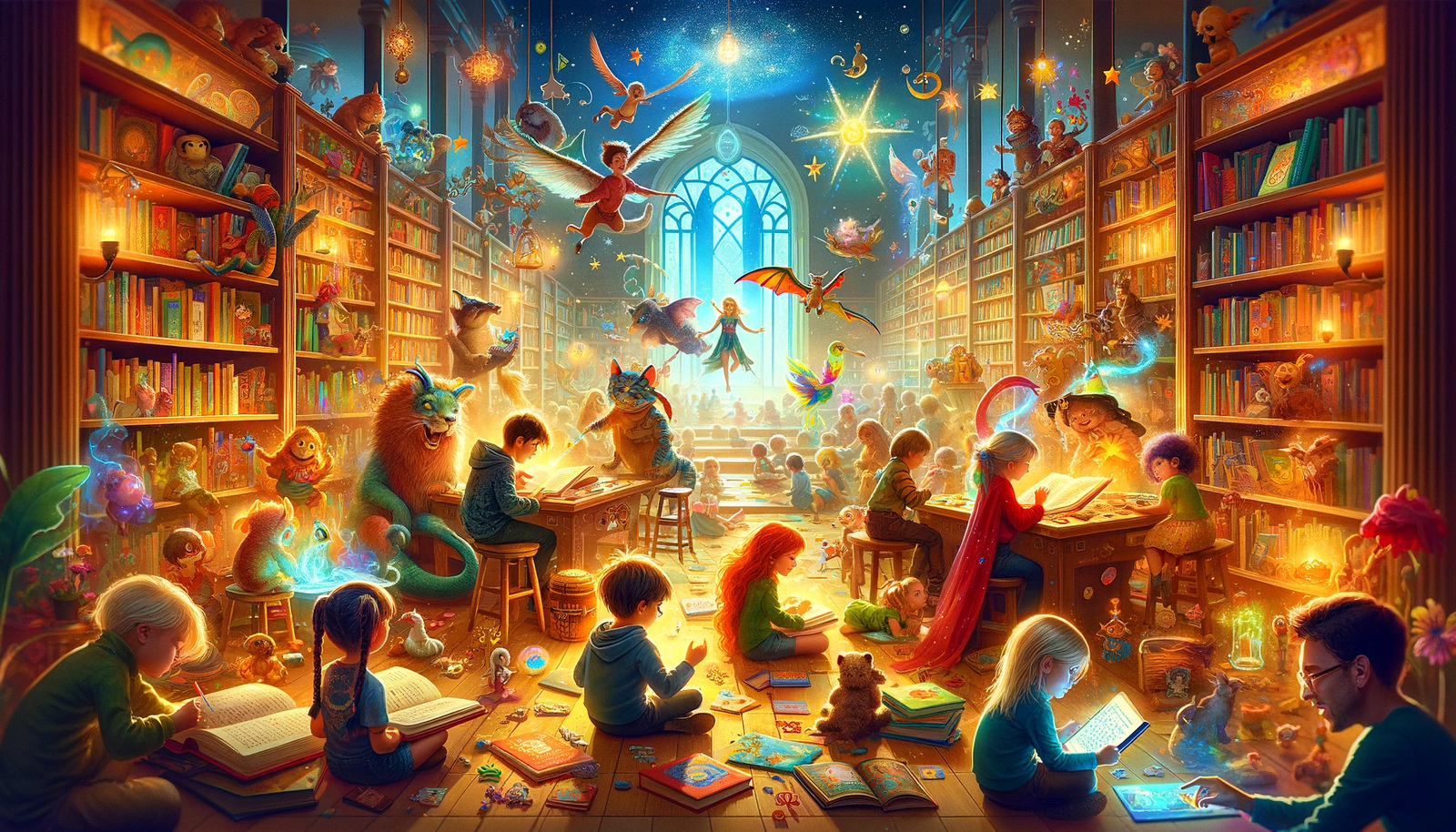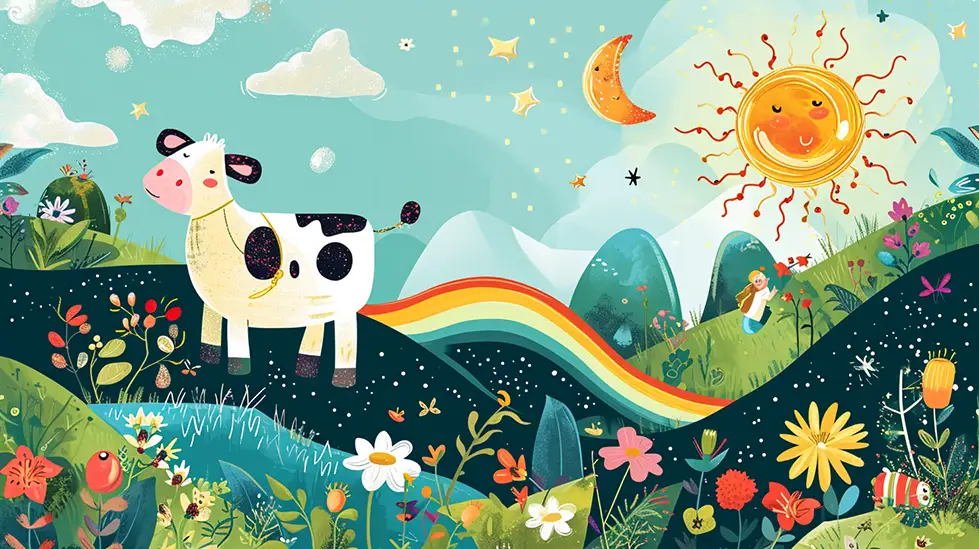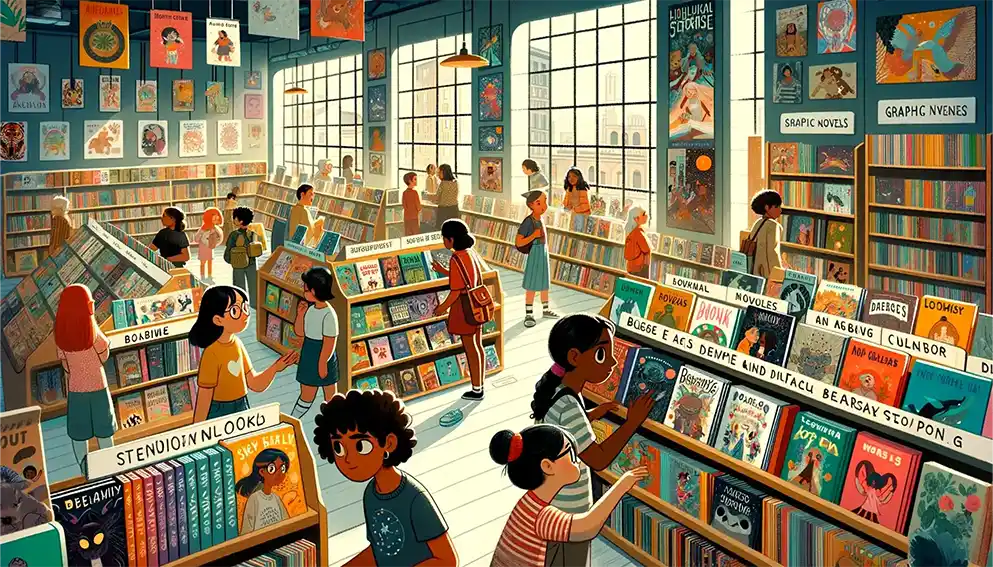Within the colorful pages of picture books, children find not just stories, but worlds. These books, rich with visuals and simple text, are often a child’s first introduction to reading. They are instrumental in developing literacy skills, as the interplay between words and images facilitates language acquisition and comprehension.
Consider the timeless appeal of a classic children’s book, where illustrations breathe life into characters and settings, making each reading experience unique. Stories come alive, imaginations expand, and parent-child bonds strengthen during these shared reading moments.
Picture Books’ Contributions to Child Development

| Aspect | Contribution |
| Visual Literacy | Develops the ability to interpret and analyze visual information. |
| Listening Skills | Enhances focus and understanding through storytelling. |
| Creative Thought | Fosters imagination and inventive thinking. |
| Emotional Connection | Builds empathy by exploring diverse characters and situations. |
| Language Development | Introduces new vocabulary and language structures seamlessly. |
By providing a visual context to the story, picture books help young readers make connections between words and their meanings, thus strengthening their vocabulary and narrative skills. It’s here that they first encounter the rhythm and structure of language, the enchanting power of a well-spun tale, and the joy of visual storytelling.
E-books and Digital Publishing: Transforming Children’s Reading Experiences
As technology advances, so does the way children read and learn. E-books have transformed the literary landscape, providing interactive and enriching experiences that physical books cannot. Digital publishing has revolutionized children’s books, making stories more accessible and engaging.

Dive into the realm of e-books for kids with a discussion on the growth of e-books and discover a dynamic platform for storytelling that transcends traditional boundaries. Interactive elements, such as animations and sound effects, bring stories to life in an entirely new way, captivating young readers.
The Benefits of E-books for Children
- Accessibility: Available anytime, anywhere.
- Interactive: Enhanced reading experience that deepens engagement.
- Customizable: Adjustable text size and fonts for different reading abilities.
- Eco-Friendly: A sustainable alternative to paper-based books.
- Variety: Instant access to a myriad of titles and genres.
E-books cater to the digital age, encouraging children to read more through the allure of technology, and thus bridging the gap between entertainment and education.
It’s important to note, however, that the tactile and sensory experience of traditional books still holds its own charm and benefit, particularly for the very young. It’s about finding the balance and recognizing the unique value both formats bring to the development of a child’s reading journey.
Nurturing Creativity with Fantasy and Adventure Children’s Books
Fantasy and adventure genres have a special place in the hearts of children. Children’s fantasy adventure books whisk young readers away to realms where dragons soar and magic reigns. They’re not just sources of entertainment; they are essential for fostering creativity and resilience.
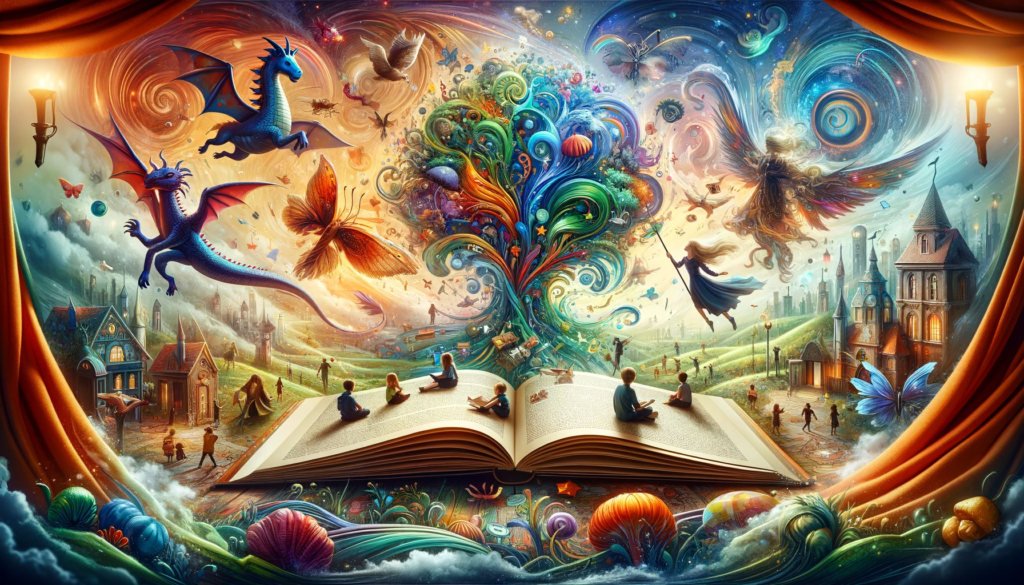
These stories often feature protagonists who overcome adversity, demonstrating the power of courage and perseverance. The heroes and heroines of fantasy and adventure tales become role models for children, showcasing that with bravery and ingenuity, even the most daunting challenges can be overcome.
Values Learned from Fantasy and Adventure Books
- Courage: Facing fears and standing up for what’s right.
- Resilience: Overcoming obstacles and bouncing back from setbacks.
- Imagination: Expanding the mind’s boundaries and encouraging creative thinking.
- Curiosity: Fostering a love for discovery and exploration.
- Empathy: Understanding and relating to characters from different backgrounds.
Reading such stories can inspire children to dream bigger and push the limits of what they believe is possible. As children follow the journeys of their favorite characters, they learn that like those characters, they too have the power to affect change in their world.
The Significance of Inclusivity in Kids’ Literature Today
Inclusivity in literature is no longer a choice but a necessity. Diverse and inclusive children’s books serve as mirrors and windows for young readers: mirrors in which they can see themselves reflected and windows through which they can view and understand the diverse world around them.
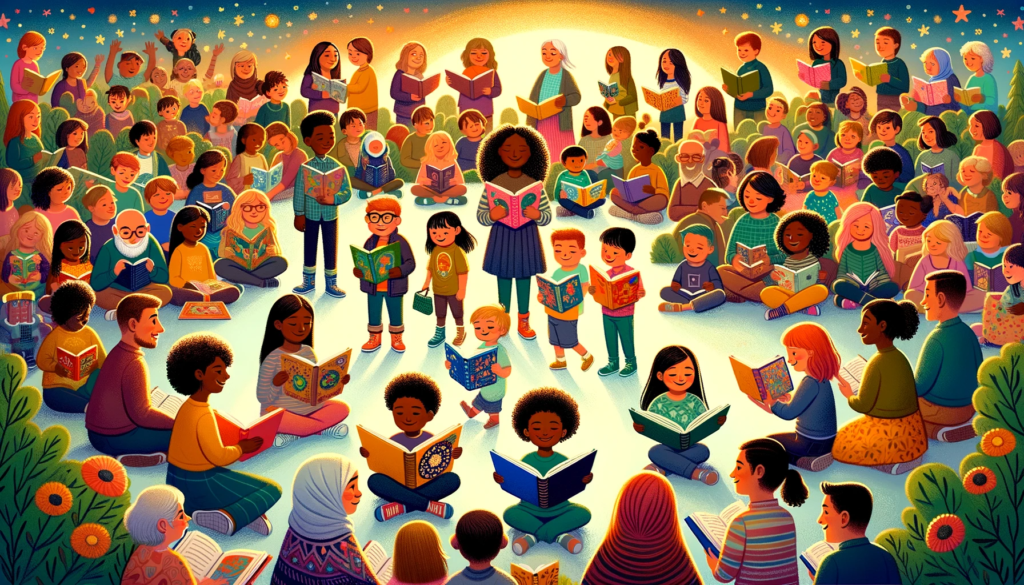
A diverse library includes stories featuring characters of different races, religions, abilities, and family structures. Such books teach children to celebrate differences and build empathy for people who may not look or live like them.
Impact of Inclusive Books on Youth
- Cultural Awareness: Exposure to different cultures and lifestyles.
- Acceptance: Fostering an environment of inclusivity and respect.
- Self-Esteem: Seeing oneself positively represented in stories.
- Social Skills: Learning to interact with a variety of people.
Inclusivity in children’s books not only reflects the diversity of readers but also prepares them for the global community they are a part of. It is through these stories that children learn to embrace diversity and to value every individual’s unique contribution to society.
The Evergreen Appeal of Classic Children’s Stories
Classic children’s literature has a timeless quality that continues to captivate generation after generation. These stories, echoing the principles of love, bravery, friendship, and adventure, have stood the test of time and remain in the hearts of readers young and old.
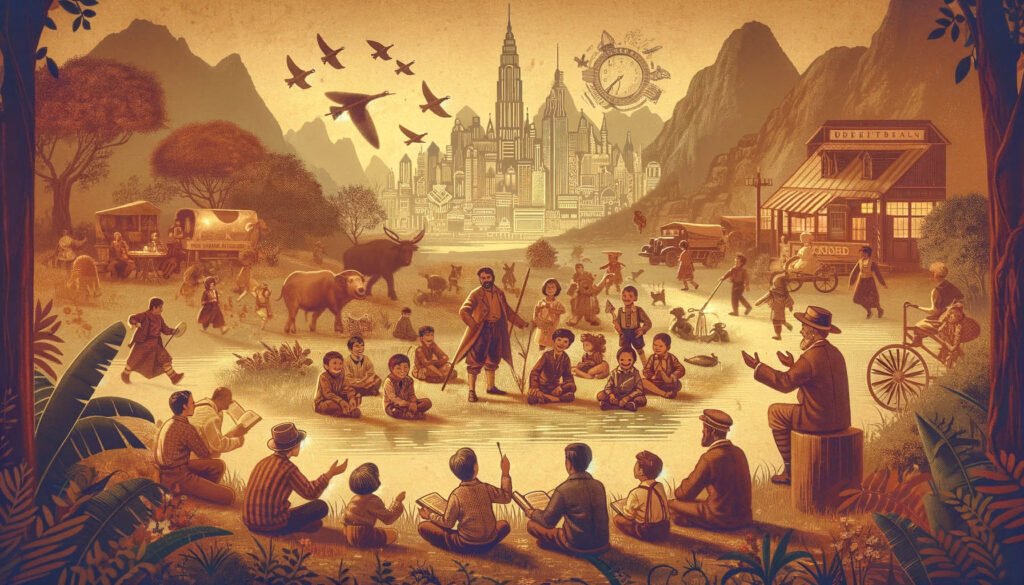
Whether it’s the mischievous escapades in “The Adventures of Tom Sawyer” or the whimsical journey in “Alice in Wonderland,” these narratives teach enduring values and life lessons. They provide a common historical and cultural context that spans across age groups, forming a shared literary heritage.
Reasons for the Timelessness of Classic Children’s Stories
- Universal Themes: Addressing core human experiences and emotions.
- Rich Language: Offering a wealth of vocabulary and sophisticated sentence structures.
- Deep Morals: Engendering strong ethical principles and a sense of justice.
- Relatability: Characters and situations that readers see themselves in.
- Cultural Significance: Reflecting and shaping societal norms over time.
By introducing children to classic literature, we give them a foundation of quality storytelling that enriches their language skills and broadens their worldview.
The Interactive Age: Engaging Young Readers with Dynamic Books
In an era where children are often found glued to screens, interactive children’s books present a compelling bridge between technology and traditional reading. Interactive children’s books utilize flaps, pop-ups, sound modules, and even augmented reality to engage children in a multi-sensory reading experience.
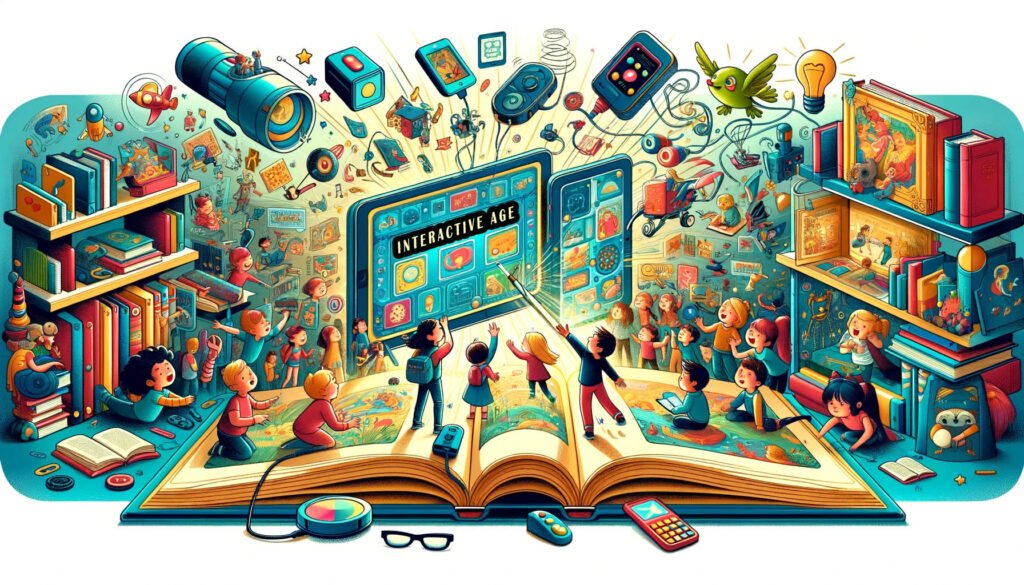
This interactivity transforms the reading process into an active, hands-on discovery. It can ignite an interest in books for even the most reluctant readers, making literature an exciting and participatory adventure.
Benefits of Interactive Reading Experiences
- Engagement: Capturing the attention of children with active participation.
- Motor Skills: Developing dexterity through tactile activities.
- Memory: Enhancing recall through interactive elements that reinforce the story.
- Entertainment: Combining fun and learning to create a love for reading.
- Technology Integration: Bridging the gap between digital natives and the literary world.
Interactive books are a testament to the continuous evolution of children’s literature, adapting to meet the needs of a generation that values interaction and engagement.
The Role of Education in Shaping Engaging Children’s Books
Education is a powerful force in the development of children’s books. Educational children’s books are meticulously crafted with the dual purpose of engaging readers and imparting knowledge. They often feature content aligned with school curricula, aiming to support and enhance the learning process.

Incorporating educational content within narratives allows children to learn naturally as they read. These books cover a myriad of subjects—science, history, math—and teach critical life skills, such as problem-solving, critical thinking, and collaboration.
Elements of Educational Children’s Books
- Informative Content: Factual information woven into stories.
- Skill Development: Activities and questions that promote critical thinking.
- Curriculum Support: Alignment with educational standards and benchmarks.
- Literacy Focus: Strong emphasis on language development and vocabulary.
By integrating educational concepts into children’s books, authors and educators are able to create engaging resources that support children’s academic growth in a fun and relatable manner.
Conclusion: Building a Foundation of Lifelong Reading
Our journey through the world of children’s books reaffirms the significant role literature plays in the lives of young readers. From picture books that spark the imagination to classics that teach timeless lessons, each story has the potential to leave an indelible mark on a child’s life.
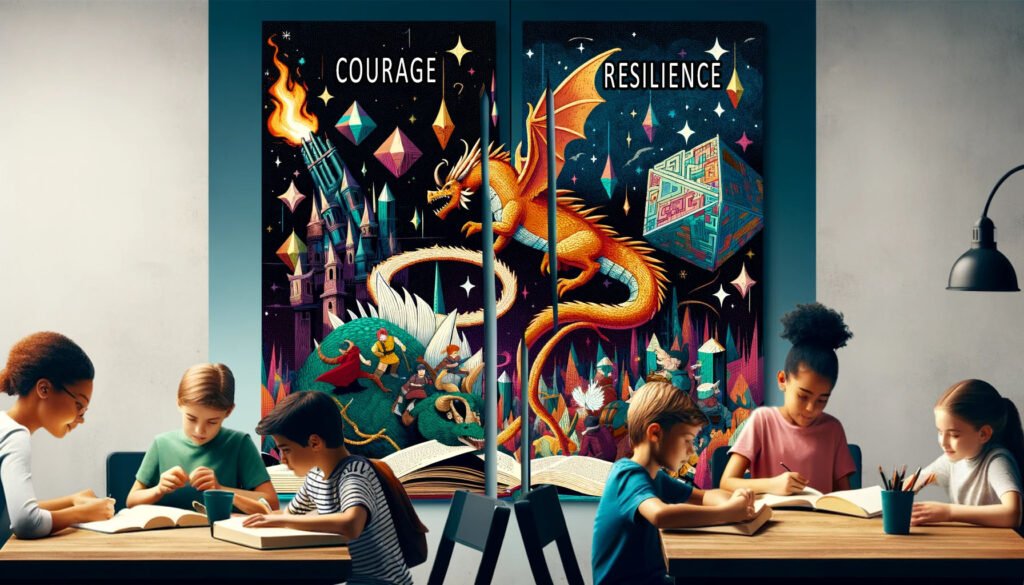
As we encourage children to delve into stories, we provide them with the keys to an infinite kingdom of knowledge and wonder. We lay the foundation for a lifetime of reading, learning, and dreaming. Let us continue to cherish and promote the invaluable treasure of children’s literature—an endless source of joy, wisdom, and inspiration.
Keep These Points in Mind
- The importance of children’s books extends far beyond entertainment.
- Each genre offers unique benefits and learning opportunities for children.
- Reading is a critical tool for cognitive and emotional development.
- The digital age presents new ways to engage children with reading.
- Educational content within stories can enhance and support learning.
- Inclusivity in literature reflects and respects the diversity of our world.
By investing in children’s literature, we invest in the future. Let’s nurture the next generation with stories that broaden horizons and build bridges to a world of possibility.
FAQ
Q: Why are children’s books important?
A: Children’s books are crucial for cognitive development, language skills, emotional intelligence, and instilling a love of reading that can last a lifetime.
Q: How do children benefit from reading a variety of genres?
A: Different genres introduce children to various themes and experiences, helping them to develop a broader understanding of the world and fostering creativity, empathy, and critical thinking skills.
Q: What role does technology play in children’s reading habits?
A: Technology provides new mediums for storytelling through e-books and interactive books, making reading more accessible and engaging for the digital generation.
We hope this article inspires and informs on the incredible impact that children’s books have. Stay attuned for more insights and discussions on literature and education aimed at nurturing the growth of young minds.

Ravjar Said is an engineer passionate about social impact. In his spare time, he runs Snowball AI – a YouTube channel exploring the intersections of artificial intelligence, education and creativity. Through innovative projects, he hopes to make AI more accessible and beneficial for all. Ravjar loves helping bring people and technology together for good.
